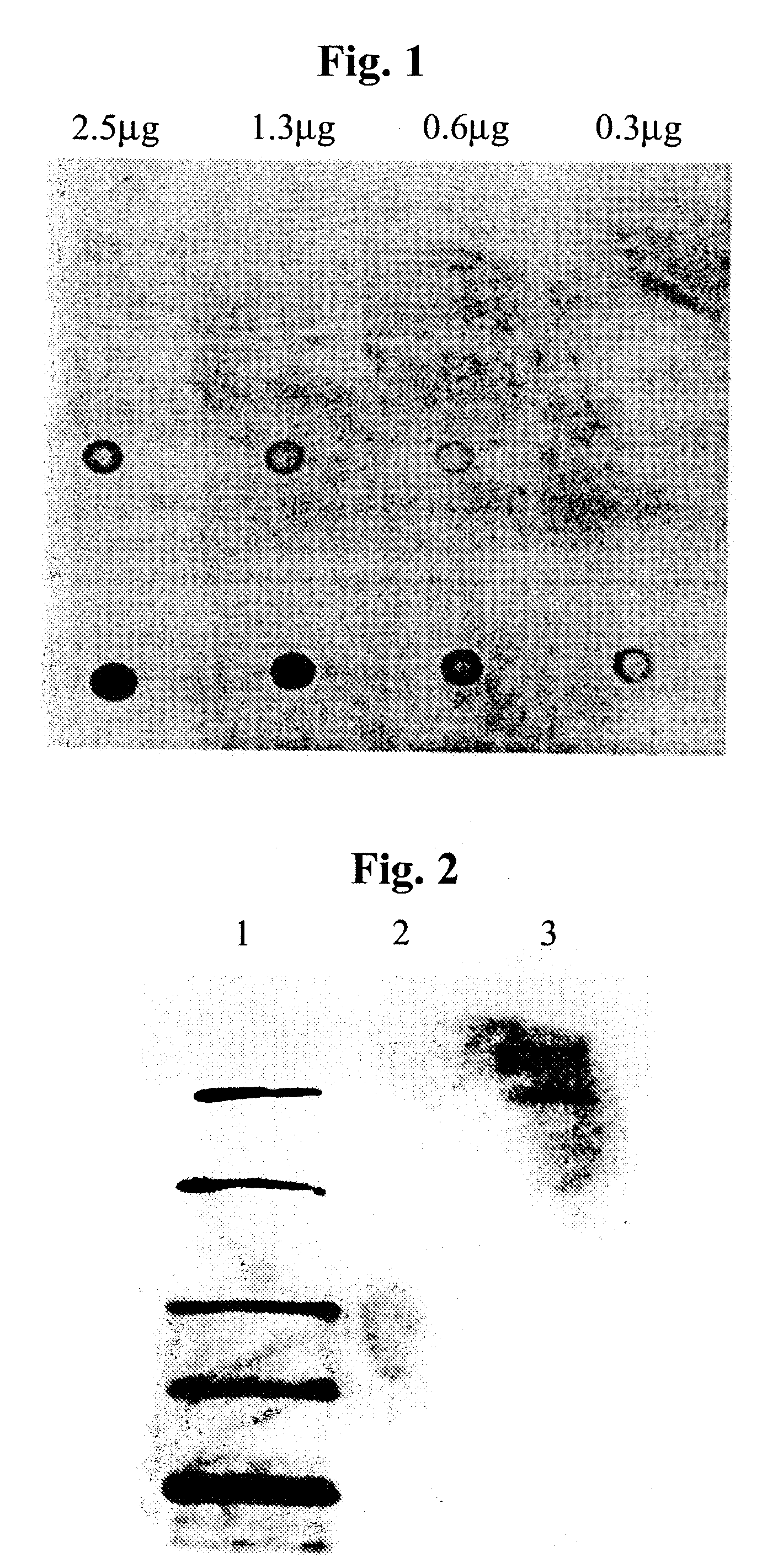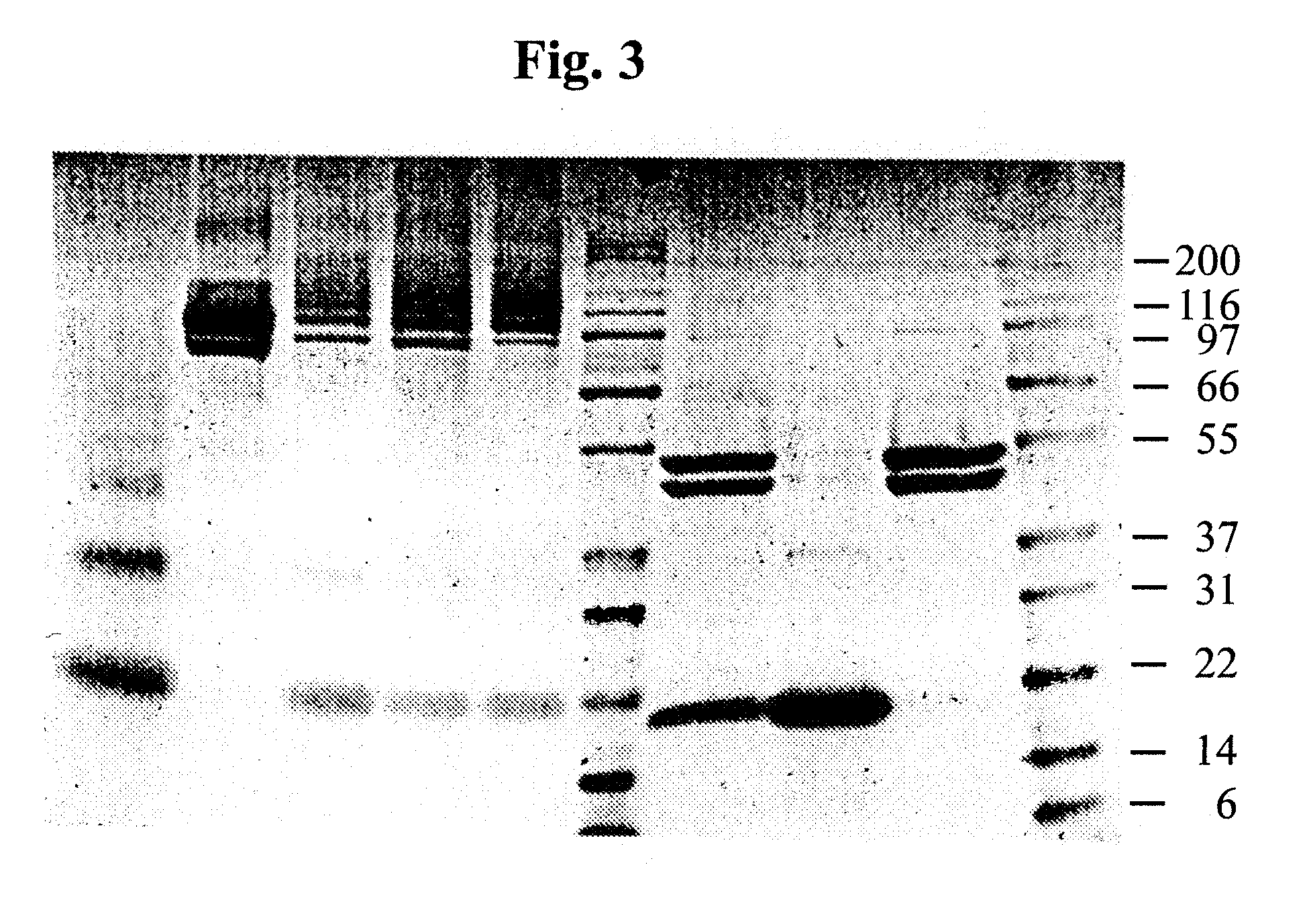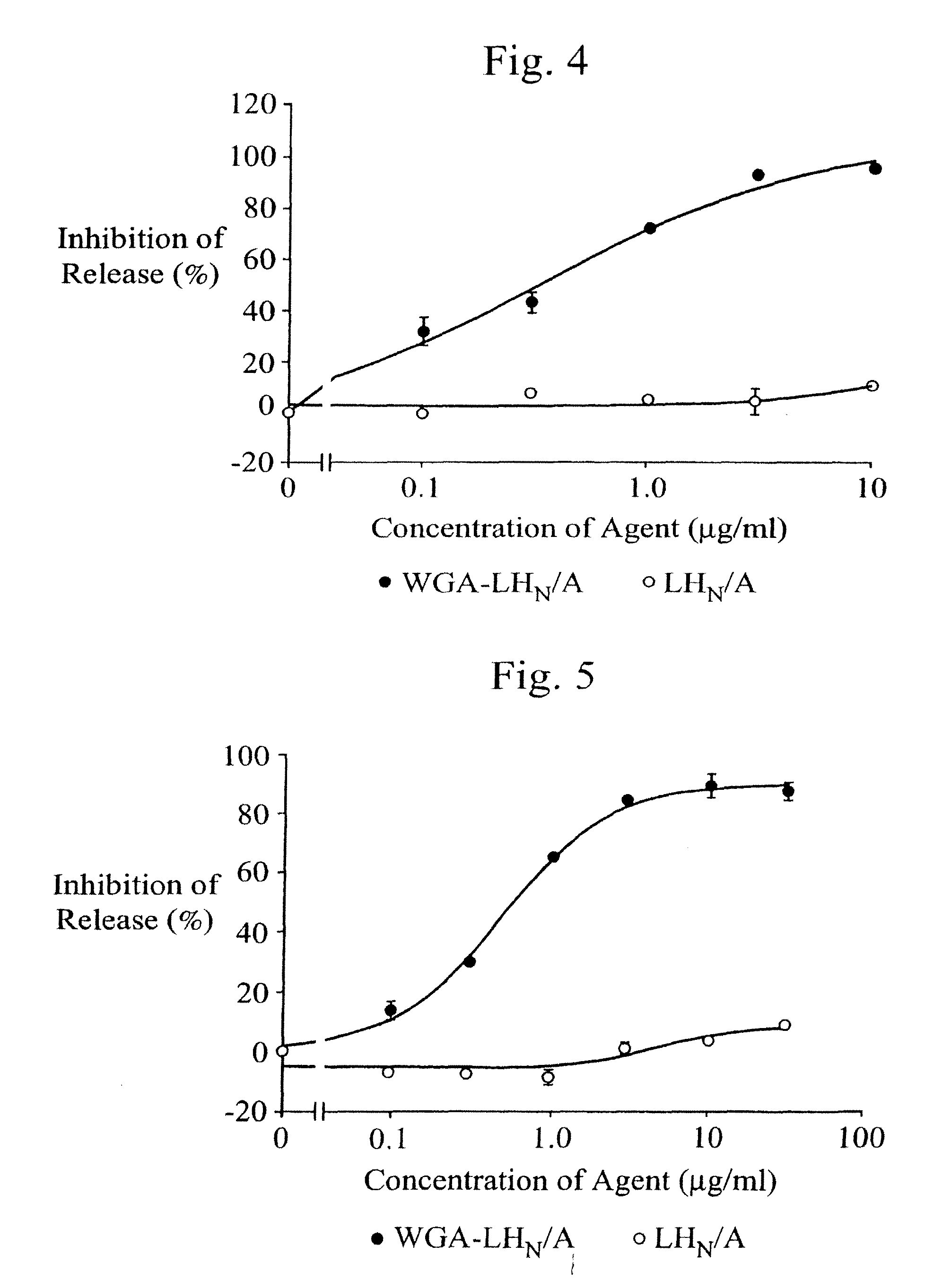Treatment of mucus hypersecretion
a technology of mucus hypersecretion and treatment, applied in the direction of drug compositions, specific cell targeting, peptide/protein ingredients, etc., can solve the problems of small airway obstruction, slow forced lung emptying, and reduced maximal respiratory flow, so as to prevent the hypersecretion of copd, reduce mucus secretion, and treat mucus hypersecretion effectively
- Summary
- Abstract
- Description
- Claims
- Application Information
AI Technical Summary
Benefits of technology
Problems solved by technology
Method used
Image
Examples
example 1
Method for the Preparation of Substance P-LHN / A Conjugates
[0148]The lyophilised peptide was rehydrated in 0.1% trifluoroacetic acid (TFA) to a final concentration of 10 mM. Aliquots of this solution were stored at −20° C. until use. The LHN / A was desalted into PBSE (PBS containing 1 mM EDTA). The resulting solution (3-5 mg / ml) was reacted with a three- or four-fold molar excess of SPDP by addition of a 10 mM stock solution of SPDP in DMSO. After 3 hours at room temperature the reaction was terminated by desalting over a PD-10 column into PBSE.
[0149]A portion of the derivatised LHN / A was removed from the solution and reduced with DTT (5 mM, 30 min). This sample was analysed spectrophotometrically at 280 nm and 343 nm to determine the degree of derivatisation. The degree of derivatisation achieved was typically 2 mol / mol.
[0150]The bulk of the derivatised LHN / A and the substance P peptide were mixed in proportions such that the peptide was in four-fold molar excess. The conjugation rea...
example 2
Method for the Preparation of a Broad Specificity Agent
[0158]Conjugation and purification of WGA-LHN / A. WGA (10 mg / ml in phosphate-buffered saline (PBS)) was reacted with an equal concentration of SPDP (10 mM in dimethyl sulphoxide (DMSO)) for one hour at ambient temperature. Reaction by-products were removed by desalting into PBS prior to reduction of the cross-linker with dithiothreitol. The thiopyridone and DTT were then removed by desalting into PBS to result in derivatised WGA (dWGA) with 1 mole -SH incorporated per mole of WGA.
[0159]LHN / A at a concentration of 3-5 mg / ml in PBSE (PBS containing 1 mM EDTA) was reacted with a three or four-fold molar excess of SPDP (10 mM in DMSO). After 3 h at ambient temperature the reaction was terminated by desalting over a PD-10 column into PBSE.
[0160]The derivatised WGA (dWGA) and the derivatised LHN / A (dLHN / A) were mixed in a 3:1 molar ratio. After 16 h at 4° C. the mixture was centrifuged to clear any precipitate that had developed. The s...
example 3
Preparation and Maintenance of Neuronal Cultures and Inhibition of Neurotransmitter Release
[0162]PC12 cells were seeded at a density of 4×105 cells / well onto 24 well (matrigel coated) plates (NUNC™) from stocks grown in suspension. The cells were cultured for 1 week prior to use in RPMI, 10% horse serum, 5% foetal bovine serum, 1% L-glutamine. SH-SY5Y cells were seeded at a density of 5×105 cells / well onto 24 well plates (FALCON™). The cells were cultured in HAM-F12:MEM (1:1 v / v), 15% foetal bovine serum, 1% MEM non-essential amino acids, 2 mM L-glutamine for 1 week prior to use. Embryonic spinal cord (eSC) neurons were prepared from spinal cords dissected from 14-15 day old foetal Sprague Dawley rats and were used after 21 days in culture using a modification of previously described method.
[0163]Inhibition of transmitter release. PC 2 cells or SH-SY5Y cells were washed with a balanced salt solution (BSS:137 mM NaCl, 5 mM KCl, 2 mM CaCl2, 4.2 mM NaHCO3, 1.2 mM MgCl2, 0.44 mM KH2PO4,...
PUM
| Property | Measurement | Unit |
|---|---|---|
| length | aaaaa | aaaaa |
| length | aaaaa | aaaaa |
| particle size | aaaaa | aaaaa |
Abstract
Description
Claims
Application Information
 Login to View More
Login to View More - R&D
- Intellectual Property
- Life Sciences
- Materials
- Tech Scout
- Unparalleled Data Quality
- Higher Quality Content
- 60% Fewer Hallucinations
Browse by: Latest US Patents, China's latest patents, Technical Efficacy Thesaurus, Application Domain, Technology Topic, Popular Technical Reports.
© 2025 PatSnap. All rights reserved.Legal|Privacy policy|Modern Slavery Act Transparency Statement|Sitemap|About US| Contact US: help@patsnap.com



